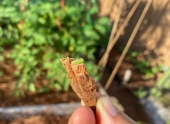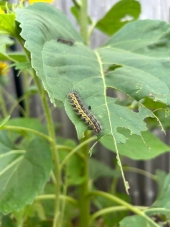posted 5 years ago
In my greenhouse, I mainly use mulch to keep fertilising the soil, but I did start with a small truck-load of high-organic-matter soil brought in from nearby. In my old greenhouse I had to carry my water up from a short distance, so I had to water the greenhouse with buckets, and saved all my greywater with a container under the sink, and used that to water the greenhouse. Now I've got a hose and other plumbing, so my greywater no longer goes into the greenhouse garden, so I'm relying on mulch, and a small amount of compost that I'm making. But still, mulch left in place really breaks down, turns black and mouldy, and the soil below it starts to looks great. But people who have strong garden experience that does not include mulch may be unwilling to try it or believe it.
After another year or two when I empty my composting toilet for the first time, I will get a huge influx of organic matter.
In the greenhouse, I get aphids (is that what you are calling white fly?) kind of no matter what. You're right, insufficient air flow seems to encourage them; excess heat and excess fertility also encourage them. Eliot Coleman, who wrote two incredibly useful books about winter vegetable production using greenhouses etc, blames the build-up in fertility for aphid population booms. He points out that because of the humidity stuck in the greenhouse in winter, we tend to not water much in winter, and then the fertility can be too much. He says when he started watering once a week or so in winter to flush the soil, he saw a great reduction in aphids. I don't see such a great reduction in aphids even when I water in winter, but maybe some. I have always squished aphids. Now that I have a hose in the greenhouse, I squish aphids only on the smallest plants, and on the larger plants I use a strong jet of water from the hose with my thumb. That works pretty well.
Caterpillars including cabbage butterfly larvae don't seem to be worse inside or outside the greenhouse for me. Of course, screening the ventilation should prevent the butterflies getting in. Here we get the "large white cabbage butterfly," whose larvae are hairy and cluster in horrible big groups. Yuck!!!
Works at a residential alternative high school in the Himalayas SECMOL.org . "Back home" is Cape Cod, E Coast USA.









